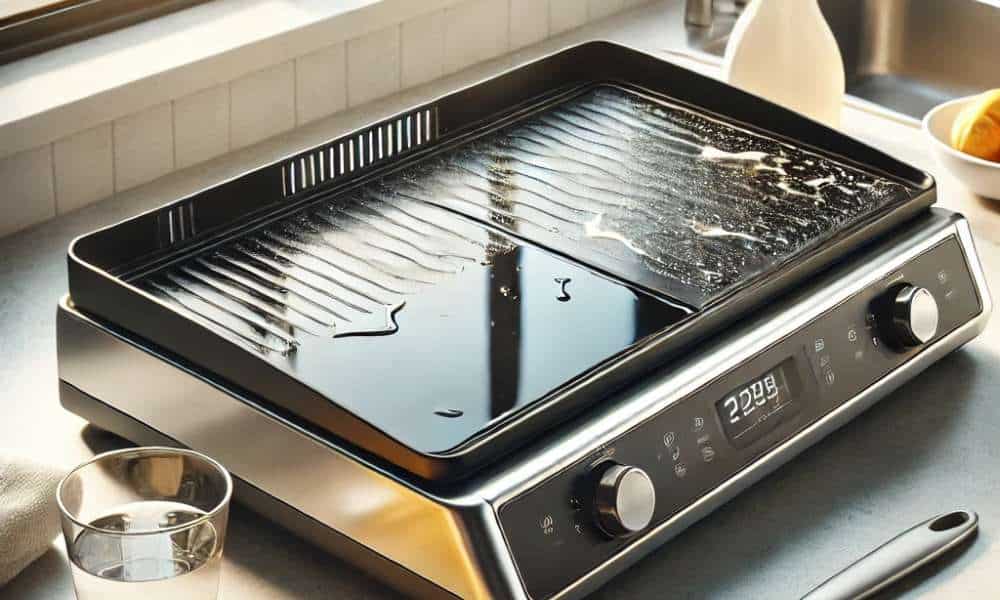Electric griddles have become indispensable in modern kitchens, offering versatility for cooking everything from pancakes to grilled sandwiches. Their flat, expansive surfaces allow for even heat distribution, making them ideal for family breakfasts and quick lunches. However, with great cooking convenience comes the inevitable challenge of maintenance. Knowing how to clean an electric griddle not only preserves its sleek functionality but also ensures the food you prepare remains hygienic and delicious.
1. Why Regular Cleaning Is Important
Neglecting regular cleaning can lead to a buildup of grease, food particles, and even bacteria. This contamination can cause unpleasant odors, affect the taste of your food, and become a breeding ground for harmful microorganisms. Moreover, consistent maintenance prolongs the lifespan of the griddle by preventing corrosion, preserving non-stick surfaces, and maintaining efficient heat conduction. Clean griddles also prevent burnt residues from transferring bitter flavors to fresh meals.
2. Understanding Your Electric Griddle
Electric griddles come in various materials, including non-stick, stainless steel, and ceramic-coated surfaces. Each type has specific care requirements. Most models feature removable parts like drip trays and detachable cooking plates, designed for easy cleaning. Always prioritize safety: unplug the appliance and allow it to cool completely before starting the cleaning process to avoid electric shock or burns.
3. What You’ll Need: Essential Cleaning Supplies
- Soft sponges or microfiber cloths: Gentle on surfaces, preventing scratches.
- Warm water and mild dish soap: Effective for dissolving grease without damaging coatings.
- Baking soda: A natural abrasive for tackling stubborn stains.
- Vinegar solution: Ideal for deep cleaning and deodorizing.
- Non-abrasive scrapers: Useful for dislodging burnt-on food without scratching.
- Optional griddle cleaning kits: Specialized tools designed for thorough maintenance.
4. Step-by-Step Guide on How to Clean an Electric Griddle
- Unplug and Cool Down: Always disconnect from power and ensure the surface is cool to touch.
- Remove Excess Grease: Use a paper towel or scraper to clear out large debris and residual oils.
- Wipe with Damp Cloth and Mild Soap: Apply a soft cloth soaked in soapy water. Avoid soaking the griddle.
- Deep Clean with Baking Soda Paste: For persistent stains, apply a paste of baking soda and water. Let it sit, then gently scrub.
- Clean the Drip Tray: Remove and wash separately with hot, soapy water.
- Rinse with Damp Cloth: Use a clean, damp cloth to wipe away any soap residue. Never pour water directly onto the griddle.
- Dry Thoroughly: Use a dry cloth to prevent moisture buildup that can cause rust or electrical issues.
5. How to Clean a Non-Removable Griddle Plate
For griddles with fixed plates, steam cleaning can be effective. Simply pour a small amount of water onto the warm (but unplugged) surface. The steam will loosen grime, making it easier to wipe clean. Use a soft cloth to absorb excess moisture immediately.
6. Deep Cleaning Tips for Burnt Residue
Burnt-on food can be stubborn. Create a mixture of vinegar and baking soda, applying it to the affected areas. Let it fizz and soften the residue before scrubbing gently with a non-abrasive sponge. Commercial griddle cleaners can also be effective but ensure they are suitable for your griddle’s material.
7. Quick Daily Maintenance Tips
- Wipe the surface after every use to prevent buildup.
- Empty and clean the grease trap regularly.
- Use cooking sprays sparingly to reduce sticky residues.
- Place a damp cloth over the griddle after light use while it’s still warm to loosen grease before wiping.
8. Common Cleaning Mistakes to Avoid
- Using abrasive cleaners: They can scratch and damage non-stick coatings.
- Submerging the griddle in water: This risks electrical damage.
- Cleaning while plugged in: Always unplug to prevent electric shock.
- Skipping drying: Leaving moisture can cause rust and electrical issues.
9. How Often Should You Clean Your Electric Griddle?
- After every use: Basic wipe-down to remove food particles and grease.
- Weekly: Deeper clean if used regularly.
- Monthly: Full inspection and maintenance for commercial or heavy home use.
10. Eco-Friendly Cleaning Solutions for Electric Griddles
Natural cleaners like vinegar, lemon juice, and baking soda are effective and eco-friendly. They cut through grease without harmful chemicals, promoting both environmental and personal health. Additionally, microfiber cloths reduce the need for disposable paper towels.
11. Troubleshooting Cleaning Challenges
- Rust Spots: Use a vinegar-soaked cloth to dissolve minor rust. For severe cases, a baking soda paste can help.
- Persistent Stains: Apply a thick paste of baking soda and water, cover with plastic wrap, and leave overnight before scrubbing gently.
- Discoloration: Often due to burnt oils; regular cleaning minimizes this.
12. Maintenance Tips for Long-Lasting Performance
- Inspect the power cord and heating element regularly.
- Store in a dry place to prevent moisture-related damage.
- Re-season non-stick surfaces occasionally by applying a light layer of cooking oil after cleaning.
Conclusion
A clean electric griddle not only ensures better-tasting food but also extends the appliance’s lifespan. Consistent maintenance prevents stubborn grime buildup, promotes hygiene, and keeps your cooking experience hassle-free. By adopting these cleaning habits, you’ll enjoy optimal performance every time you plug in your griddle.

